Candy at OEH – Part 6
So, I hope I left some of you wondering and curious! Asking the five W’s and How!
What are collard greens?
Where do you get smoked turkey legs?
When do you have time for all this cooking and shopping?
Who is going to eat ALL this food?
Why are these dishes considered authentic Kwanzaa dishes?
How you going to make cornbread in Japan?
Plus more. In the next few blogs I will attempt to answer these questions by mapping out the ingredients: their relation to celebrating Kwanzaa, as well as my family’s timeline for cooking these dishes. And for the serious foodies WHERE to get the ingredients on the cheap if at all possible in Osaka!
1. Collard greens with bacon
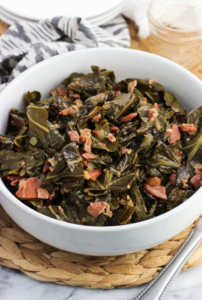
Super simple and very healthy ingredients-collard greens, bacon, salt, pepper, fresh garlic.
Collard greens are a dark leafy vegetable that African slaves first encountered once reaching American in the 1600s.
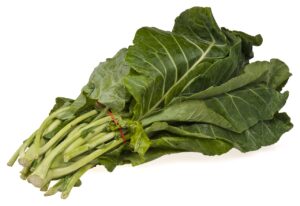
The eating of collard greens is Mediterranean. They became one of the few vegetables that slaves were allowed to grow and consume themselves. As slavery was abolished collard greens had became a stable for my people and are served at the majority of family gatherings.
This is a quick and easy dish to make, wash, boil, drain, chop into bite size pieces, add bacon and seasonings-Voila! Sadly enough I still have yet to make this dish in my 15 plus years of living in Japan. The vegetable is not part of the Japanese diet. They have several leafy green vegetables that are in the same family… spinach is probably the closest but not close enough to add bacon and the same seasonings.
2. Shrimp creole
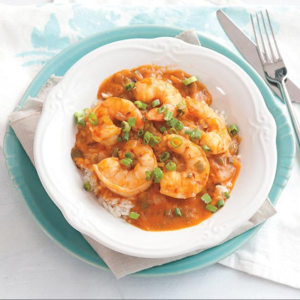
First, the ingredients-shrimp, tomatoes, tomato sauce, onion, green peppers, garlic, black pepper, tabasco sauce and long-grain rice.
Because Kwanzaa is ALL about embracing every step that African slaves took during their tormenting trip to a new home, Cajun and Creole food is included in the journey. This dish can be found in the majority of restaurants and cafes in the American home of Cajun and Creole, New Orleans.
As far as to when to make this dish. Prepare the rice and shrimp ahead of time and start cooking the dish about 30 minutes before serving. It’ll be eaten quickly. On Cookpad it is listed as Shrimp Etouffee in English.
Aside from the long grain rice which I have a stockpile of instant Uncle Ben’s long grain rice, this is a nice dish to make at home.
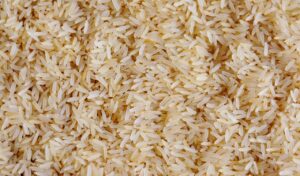
The rice is ordered through Amazon.co.jp through a search also in English. I do recommend having the real thing first by visiting my friend C.C’s New Orlean’s Bistro in Kita-Horie, a nice stroll from Shinsaibashi or Namba in Osaka.
3. Sweet potato pecan pie with graham cracker crust
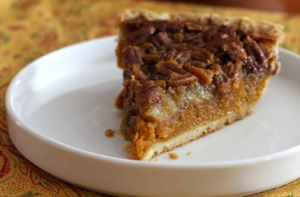
Let’s take a moment to exhale deeply and not get too emotional! As I miss my mom’s sweet potato pie. I haven’t had it in forever and the few times I’ve tried recreating here in Japan I feel disappointed and annoyed and you can see where my emotions are going! And in Japanese there is a word for this: fukuro aji. Fukuro meaning mom and Aji meaning flavor. If only I could place an order online! MOM!! I’m going to skip the list of ingredients because I seriously don’t recall exactly what my mom uses.
The importance of sweet potato pie to Kwanzaa is it offers the chance to honor an important person in the history of Black American culture, George Washington Carver. He was a botanist and chemist who highlighted dozens of uses for the plant. The sweet potato plant is now recognized as one of the most natural and nutritious foods. Something the Japanese relish in as Yaki-imo is a popular snack during the cold winter months.
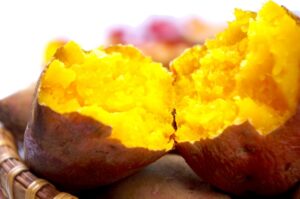
Because I have yet to perfect Fukuro Aji, I can be found at Rappopo buying their apple sweet potato pie. It’s NOT exactly the same but close enough for me for now. The graham cracker crust is available through Amazon.co.jp when you search in English
Sorry to end on such an emotional note. I hope you’re enjoying these Kwanzaa blogs. In America the entire month of February is Black History Month and these dishes will be eaten again and again in celebration. If anyone needs more information, feel free to contact me at OEH. Psst, there are 5 more dishes to present in this series.
To be continued…

